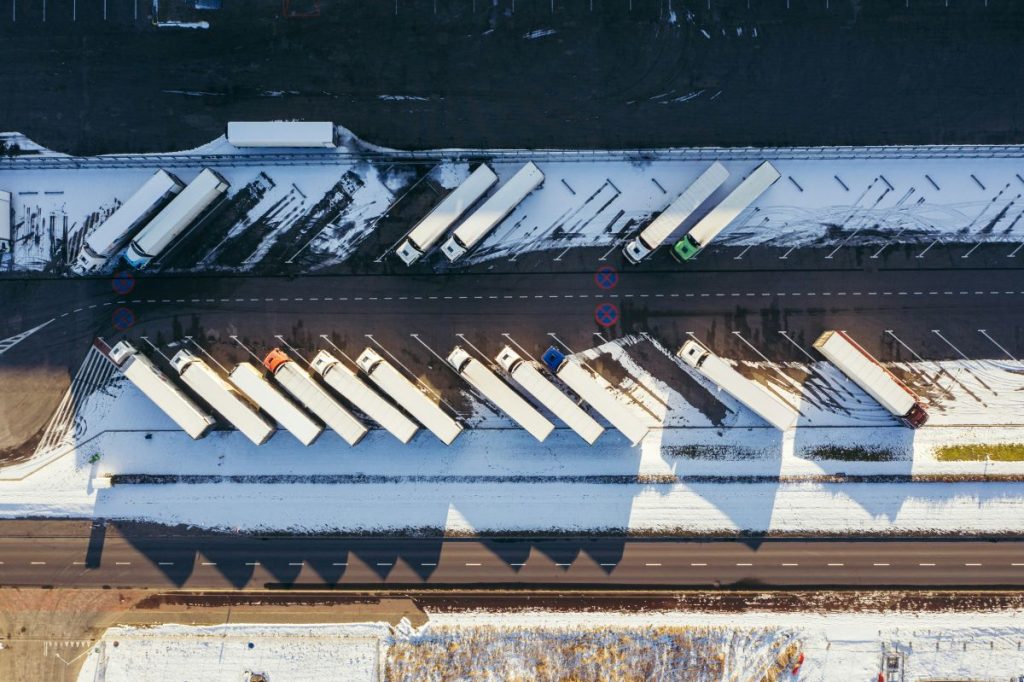The logistics sector is undergoing a rapid transformation with the integration of connected vehicles and smart warehousing technologies, all driven by strict adherence to global industry standards. Leveraging IoT sensors, AI-driven systems, and advanced automation, these innovations are reshaping how goods are transported and managed. From real-time data collection to fully autonomous fleets, logistics companies are embracing technology to improve efficiency, reduce costs, and enhance sustainability.
The Role of Connected Vehicles in Modern Logistics
At the heart of this shift are connected vehicles equipped with IoT-enabled sensors, which gather real-time data on various parameters such as speed, fuel consumption, and cargo conditions. These vehicles, increasingly following automation standards like SAE J3016, which defines the six levels of vehicle automation, are making logistics operations more dynamic and adaptable. By utilizing Level 2 and 3 automation, where vehicles assist drivers by adjusting speed and steering based on conditions, logistics companies can ensure more precise deliveries and optimize routes.
Connected vehicles are not only interacting with other vehicles through V2X (Vehicle-to-Everything) communication protocols but also integrating with smart warehouses that follow ISO 9001 standards for quality management. This integration enables seamless data exchange between trucks and warehouse systems, allowing for real-time adjustments in inventory, routing, and delivery schedules. The synchronization of vehicles with smart warehousing systems contributes to a more efficient logistics flow, minimizing delays and reducing operational costs.
Cloud platforms certified under ISO 27001 play a critical role in securing the vast amounts of data transferred between connected vehicles and warehouse systems. Ensuring that data is both accessible and protected is essential for maintaining operational integrity and meeting regulatory requirements in an increasingly digitalized logistics ecosystem.
Challenges in Adopting Connected Logistics Systems
Despite the advantages, there are notable challenges in adopting connected vehicle technology and smart warehousing. One primary obstacle is the integration of new systems with older, legacy logistics infrastructure. For companies with aging vehicle fleets, upgrading to meet automation standards like SAE J3016 can be expensive, especially for smaller firms with limited capital. Retrofitting existing vehicles with IoT sensors offers a potential solution, but it requires careful planning to balance cost and technological gains.
Cybersecurity also poses a significant challenge. Connected vehicles and smart warehouses create new vulnerabilities, as these systems offer multiple entry points for potential cyberattacks. To mitigate these risks, logistics firms must ensure their systems comply with ISO/SAE 21434, a cybersecurity standard specifically designed for road vehicles. Maintaining data security is crucial for protecting sensitive customer and operational information, which is now being transmitted across multiple touchpoints in the supply chain.
The industry also faces a skills gap, with a shortage of workers trained to manage these advanced technologies. Logistics professionals now need to understand both traditional supply chain management and the technical complexities of connected vehicles and AI-driven warehouses. Moreover, the energy demands of autonomous systems have raised sustainability concerns, which must be addressed to comply with ISO 14001 environmental standards.
Overcoming Barriers and Driving Future Growth
To navigate these challenges, logistics companies should take a phased approach to adopting connected vehicle technologies. For instance, retrofitting existing fleets with partial automation capabilities and IoT sensors can provide immediate benefits without the financial burden of replacing entire fleets. Government incentives and grants can further help offset costs, enabling companies to modernize at a more manageable pace.
Another critical step is the implementation of robust cybersecurity measures. Ensuring compliance with ISO/SAE 21434 will help safeguard connected logistics systems, protecting data from cyber threats while ensuring compliance with both regional and global regulatory frameworks. Additionally, addressing the skills gap through specialized training programs focused on IoT, AI, and autonomous systems will be essential for building a workforce capable of managing the logistics operations of the future.
Sustainability efforts should focus on investing in energy-efficient autonomous vehicles, such as electric trucks, that align with ISO 50001 standards for energy management. These investments not only reduce environmental impact but also improve long-term operational efficiency by cutting fuel costs and emissions.
The Future of Connected Logistics
The future of logistics will be characterized by fully autonomous vehicles that communicate seamlessly with smart warehouses and other logistics infrastructure. As these technologies evolve, we can expect tighter integration of V2X communication systems, predictive maintenance driven by IoT data, and increased adoption of blockchain technologies to ensure supply chain transparency and security, in line with ISO/IEC 20231 standards.
Logistics companies that embrace these innovations and adhere to industry standards will lead the sector’s transformation. By implementing connected vehicle and smart warehousing technologies, firms will be better positioned to build sustainable, efficient, and agile supply chains that can meet the ever-growing demands of a global marketplace.
Connected vehicles and smart warehouses are not just transforming logistics—they are setting a new standard for efficiency, safety, and sustainability in the industry. The companies that can effectively integrate these technologies while maintaining compliance with evolving global standards will be at the forefront of logistics innovation.



